Ben Ellison and Ross Mahon wanted a Widgeon. The Seattle pair have an Alaska habit and desired a capable, personal-sized amphibian good for the Seattle to Ketchikan run plus poking around inlets and inland when needed. The smaller Grumman flying boats, the Widgeon and Goose, seemed ideal. But the elderly Grummans were worn out, short ranged and had a disquieting porpoising habit.
“I wish they made new ones,” was the first thought. “I wish they made something better,” was the second. And so in 1990 Ben, the principal driver of Gweduck development, backed by talented engineers and craftsmen, embarked on the immense task of designing and building a twin-engine flying boat. They completed the fiberglass prototype Gweduck 15 years ago and have been flying it ever since. Since then, the team has advanced the airplane into a kit, one made out of carbon fiber and incorporating more than 1400 hours of the prototype’s operation. Now available for general sale, the first two production Gweduck kits are under construction at the program’s build facility in Prineville, Oregon.
Money, of Course
Why did it take 15 years to make a kit? The answer, of course, is money, with the added explanation that after developing the prototype, Ben and Ross were tired of building and having too much fun flying their creation. Understandably they really didn’t want to stop and take the time to kit the big twin. But now they are, and as no other Experimental—or certified airplane for that matter—can do what the Gweduck can, it’s time to take a good look at the program.
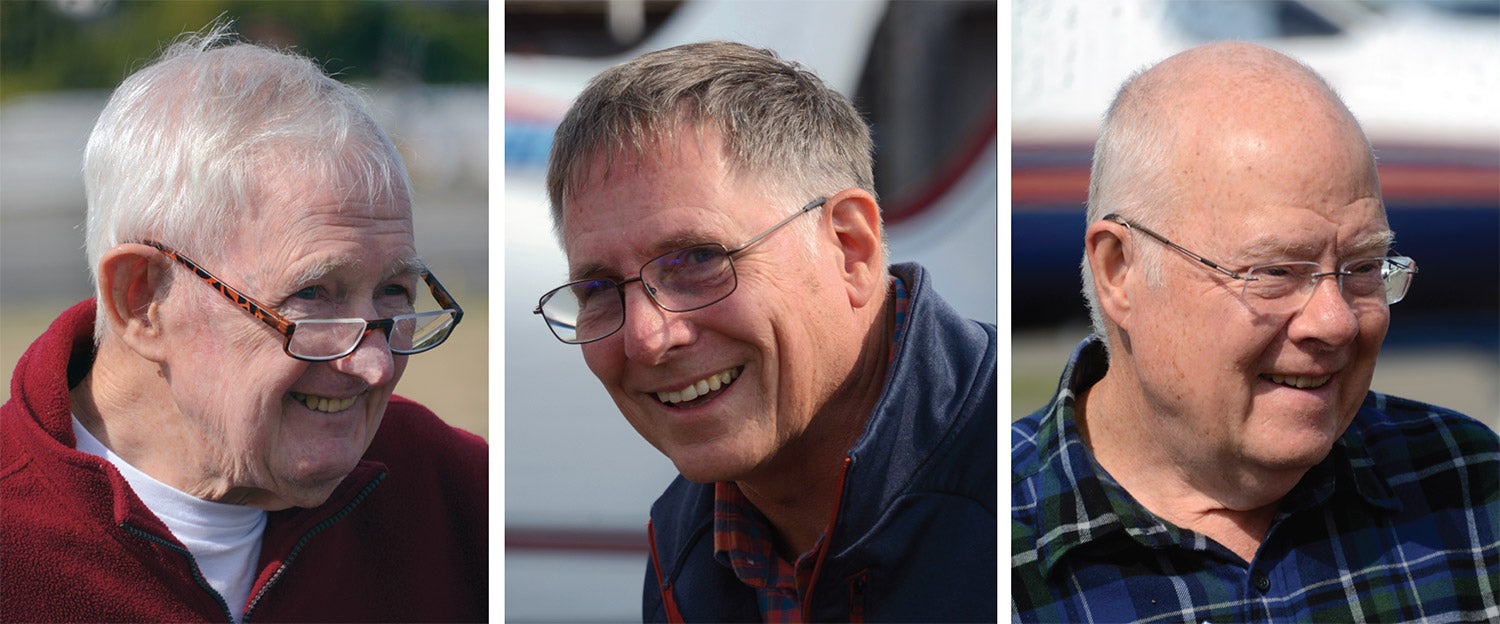
Pivotal to kitting the Gweduck is Walter Fellows. A retired financier with an aerospace background and an apparent soft spot for waterbirds, Walter provides both the large volume of social lubricant necessary to move the Gweduck forward, along with a suitably spacious production facility, Composite Creations. That’s where the Gweduck fabric meets the resin and the resulting panels are assembled into complete aircraft.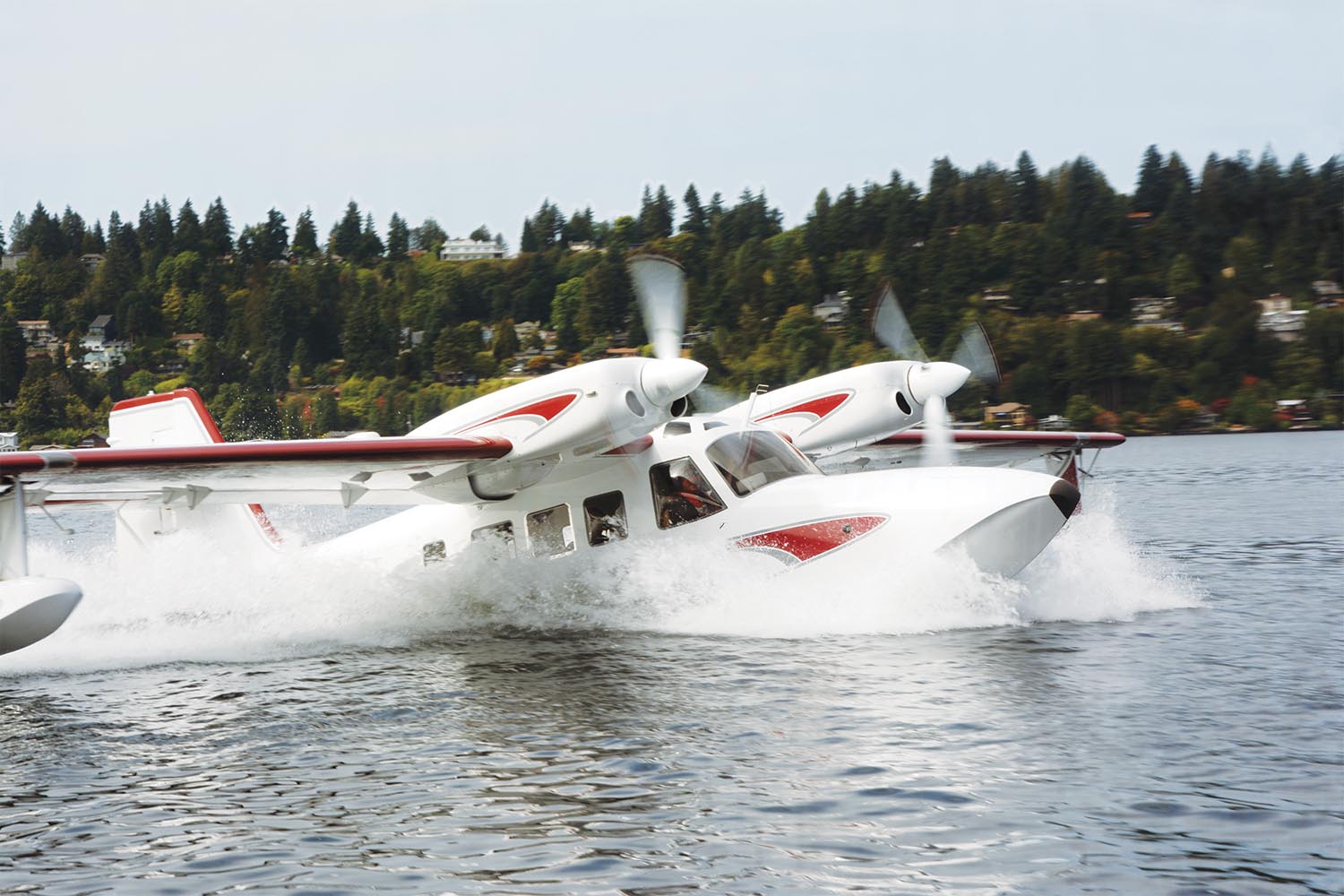
Located about six hours south of Seattle in Prineville, Composite Creations is also where Gweduck customers visit to build their plane. No off-site Gweduck kit assembly is possible as the parts are far too large to ship or fit inside any standard garage or typical out-building, plus extensive, large and heavy steel tooling is required to hold the wing and fuselage during assembly. This is strictly factory-based kit assembly, a process with advantages. One of these is engaging the owner much earlier in the aircraft’s construction, such as building ribs and other fundamental parts. There is also the professional oversight by those familiar with the design so no time is wasted guessing at how to do something, plus the efficiency of a dedicated shop with all the right tools.
The Prototype
Ben and Ross’s vision in 1990 was a fiberglass Widgeon. But it was apparent the smallest Grumman flying boat was too small and full of quirks—the cabin door won’t open if the flaps are down, for example—to justify something approaching a direct copy. As they realized they were going to design the whole thing from scratch the driver became an engine choice—either a pair of 200-hp four-cylinder engines or a brace of 300-hp sixes. For utility’s sake they opted for the larger engines, counter-rotating Lycoming IO-540s normally found on the wing of Piper Navajos. These engines feature updraft cooling and up-and-out exhaust routing that seems odd on the Navajo, but works perfectly in the high-wing Gweduck. Wet, underwing exposure is minimized and updraft cooling and exhaust make sense—the latter, especially, helping reduce cabin noise. Their counter rotation is also beneficial to water handling.
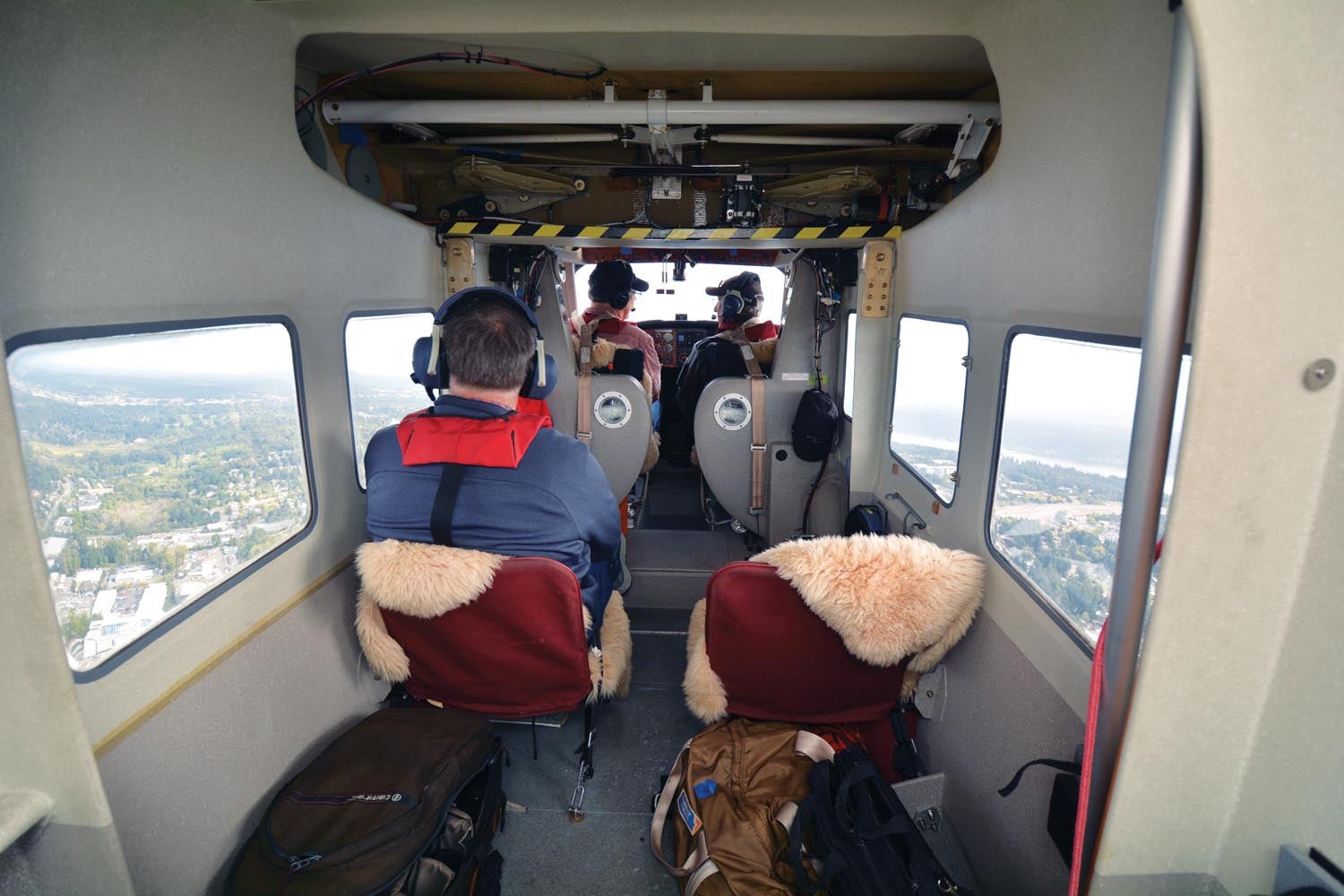
With the engines decided, the rest of the airplane’s general size and mass fell into place. True, a slightly higher aspect ratio wing was desired, which in turn required a larger vertical tail and thus a little extra mass, but the size, approximately 20% larger than a Widgeon, was set. Otherwise the traditional high-wing, twin-engine flying boat layout suggested itself on practical grounds. Prime goals were avoiding the Grumman’s porpoising tendency and achieving the best possible water spray characteristics.
While composite construction has been with us seemingly forever, in the 1990s carbon fiber was still a bit exotic for homebuilding aircraft, especially one this large. As a result, the prototype we flew and seen here in photos was mainly laid up in fiberglass over foam cores with a carbon fiber spar and control surfaces. As any wharf rat will tell you, ’glass is God’s gift to boating thanks to its impact strength, low maintenance needs and watertight properties. To maximize its watertight nature the Gweduck was designed without a single hull penetration below the waterline.
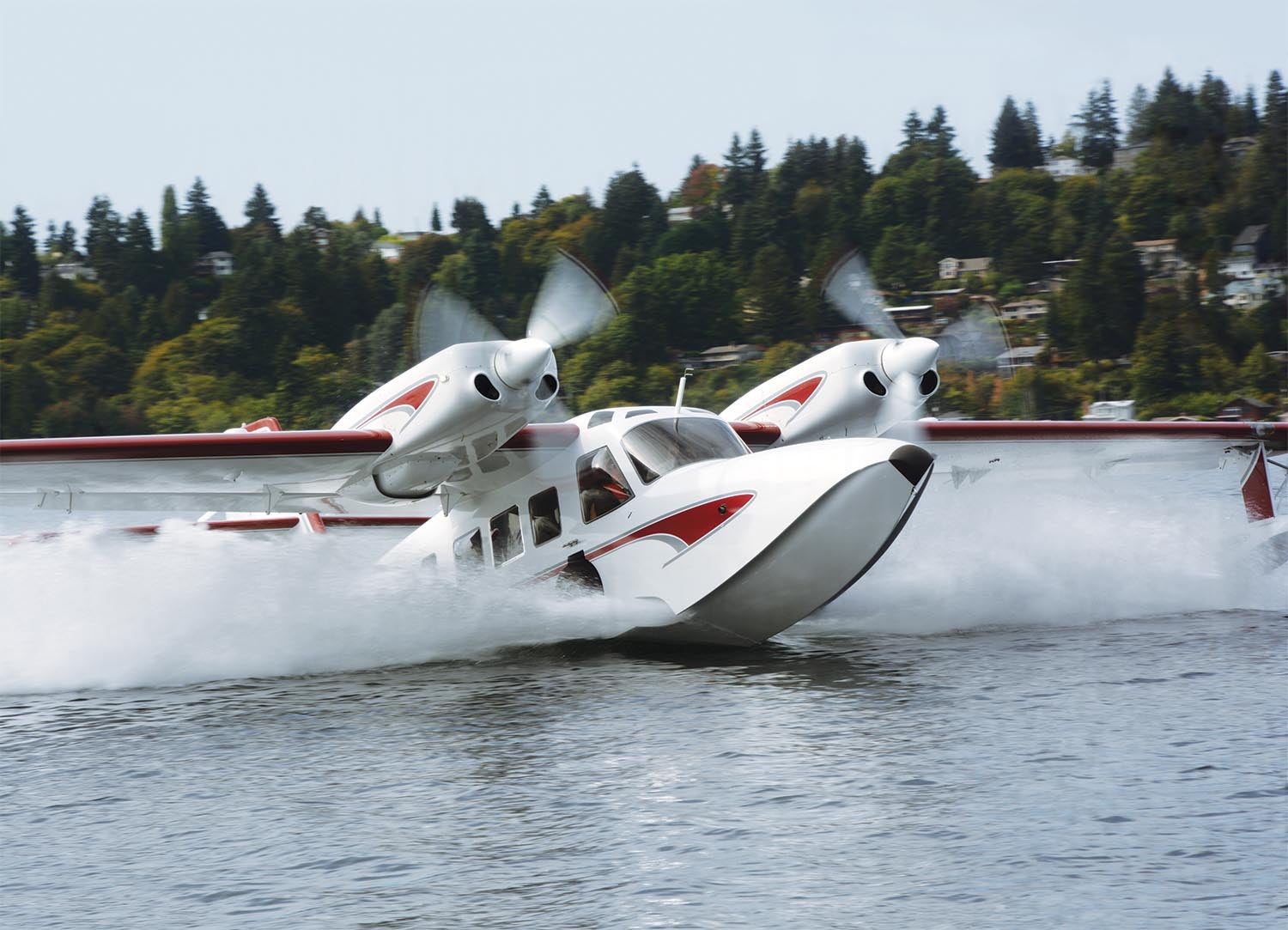
Ask a Pro
Designing a twin-engine flying boat takes professional engineering and protracted testing. Ben, Ross and Ben’s brother, Marty Ellison, began by enlisting the abundant pro help in the Seattle area. Most fundamentally, they spoke with Alaskan and Caribbean flying boat operators for real-world input and brought in Boeing engineers via Ross’s father, Bryan Mahon, who worked at the aerospace giant, including Boeing’s Canada-based production of PBY Catalinas during the war. “All contributed to the Gweduck concept and design details,” says Ross. In the end, they realized their challenge was to build a boat that flies and not so much an airplane that floats.
The first article was a quarter-scale radio-controlled model powered by chainsaw engines and flown, “in a drainage ditch in the middle of nowhere.” Filming allowed detailed understanding of the results. For a baseline, “We built a Widgeon hull and it porpoised like mad,” says Ross. Research revealed step height—the height of the notch in the bottom of the hull designed to break water suction—is one key in determining porpoising characteristics. The greater the step height as a percentage of the hull’s beam (width) the better behaved the hull is coming in and out of the water. “We nominally have a 10% height,” notes Ross, “the Widgeon has a 6% percent height.”
Besides water handling, model testing also confirmed water spray research, mainly to keep water out of the prop arcs but for other operating modes as well. This is a surprisingly nuanced field as the sea state alters what works—large spray rails help in low water yet hinder in high seas—not to mention the aerodynamic effects of chines and channels, strakes, steps and deadrise angles. Ultimately the Gweduck ended up with a carefully iterated hull shape, featuring some distinctive channels including the spray suppression slot seen about a foot forward of the retracted main tires. The slot concept was borrowed from the large post-war Japanese Shin Meiwa flying boats—it collects and angles a heavy stream of water away from the props during takeoff when everything is heavily loaded. This cured a big weakness of the Grummans.
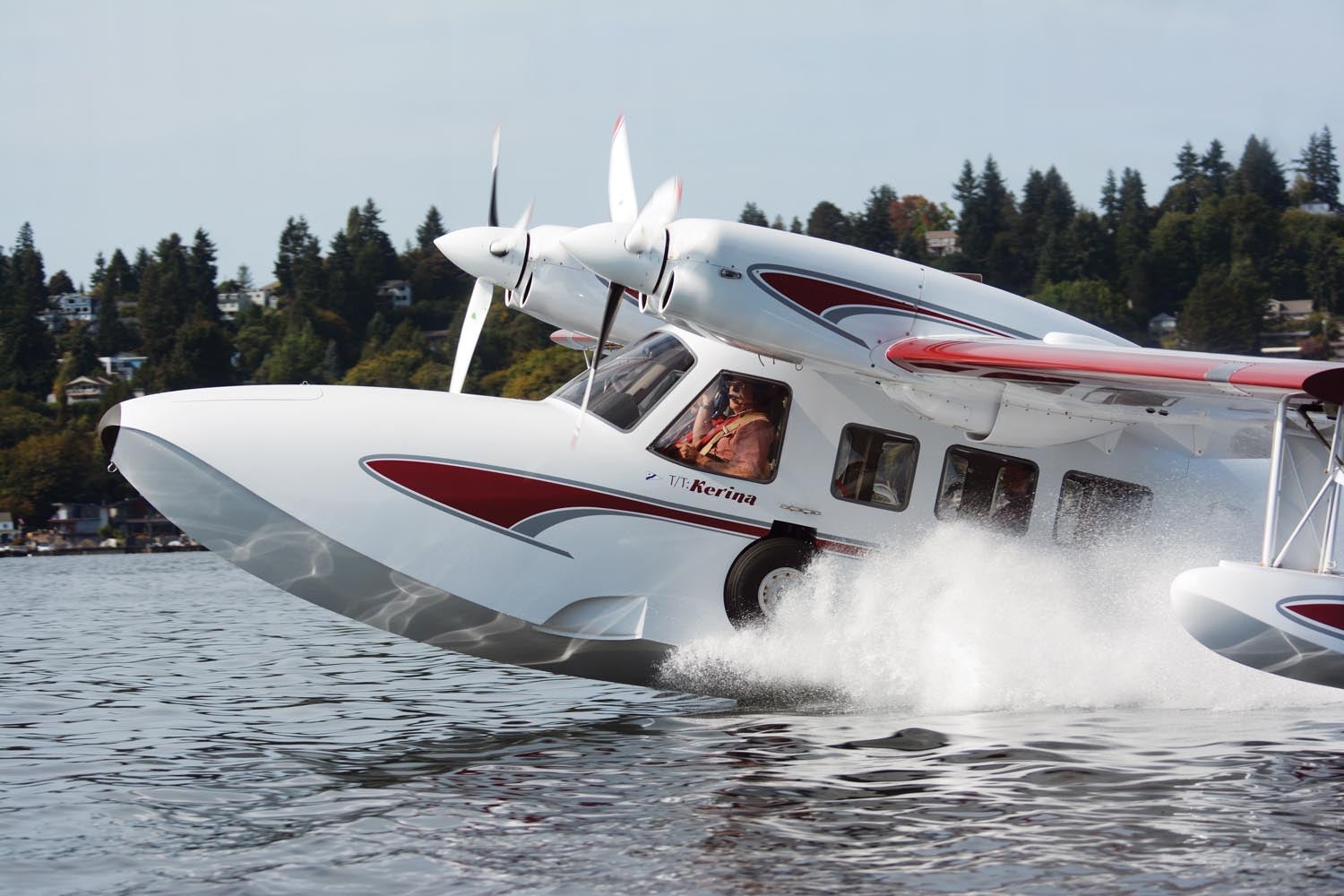
Asked how large a sea the Gweduck can handle, Ross sighs as it’s a question loaded with conditions. Much depends on the aircraft’s weight, pilot skill and, surprisingly, “how much abuse you want to experience. The airplane will handle more than you want to.” Sea state matters, too. Large, widely spaced ocean swells are less of an issue than tightly packed, sharply peaked wind-driven waves. As a flying boat, the Gweduck naturally has a much longer hull length than a floatplane, helping it take on “a broader range of sea states [than] you can operate a floatplane in.”
A not so obvious advantage is taxiing. Combining the Gweduck’s advanced hull with its counter-rotating propellers means differential power allows crosswind water taxiing impossible in floatplanes along with higher hull-in-water taxiing speeds. “We routinely taxi at 1200 rpm due to the low spray…[we] can cruise at 10 knots” in displacement mode, something a Goose can’t do.
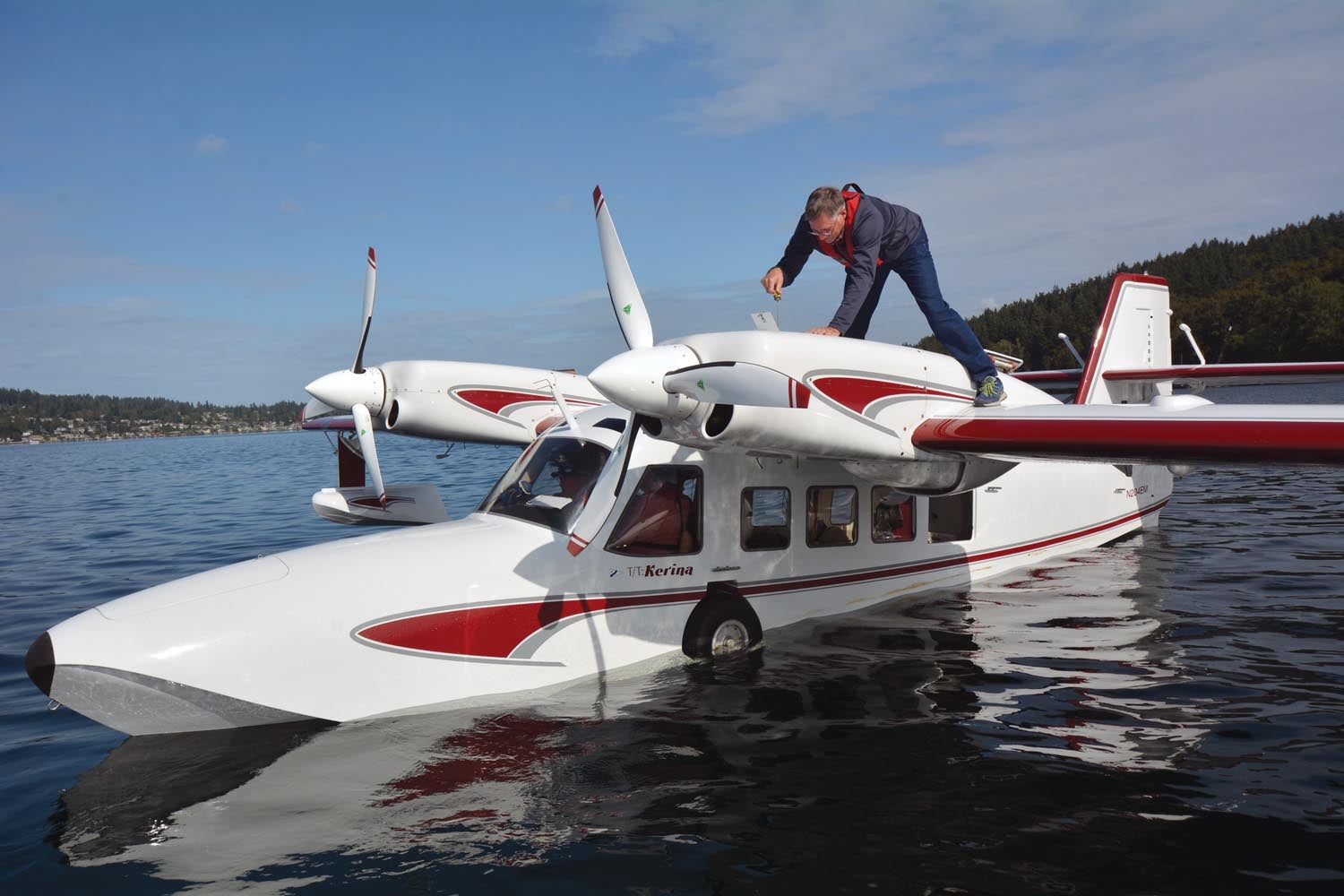
Another advantage of the counter-rotating props is the elimination of torque roll. This is the tendency to dig in the left tip float during takeoff while countering engine torque. This is true of any airplane but not noticed in most landplanes where the main gear tire firmly counteracts torque, but an annoyance in flying boats due to the big moment at play on the tip float. As for direction of rotation, the sole criterion is having the inboard blades swing downward to direct spray away from the windshield or bouncing off the fuselage and into the prop—same as on a Navajo, as it turns out.
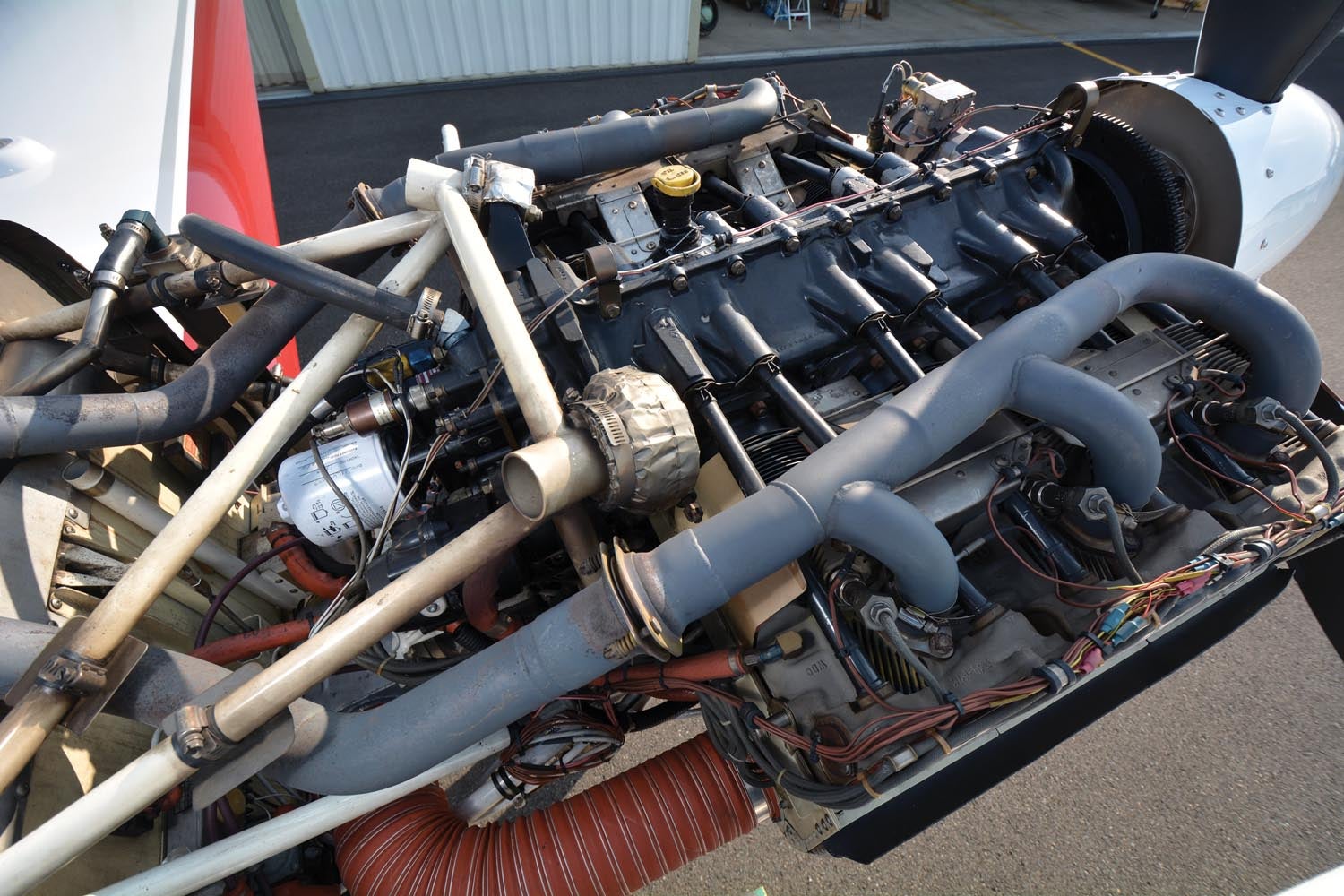
Winging It
Aside from the aforementioned desire for a greater aspect ratio for reduced drag, the one-piece Gweduck wing was developed for minimal weight, ease of construction and benign handling. Meaningful weight conservation comes from the elimination of a spar overlap a two-piece wing would require plus the one-piece design is easier to build accurately. The airfoil is a Harry Riblett shape, giving modernized flow separation on the leading edge for a soft stall yet with good lift and drag performance. Keeping drag corralled was emphasized as the Gweduck mission is foremost long-distance cruising.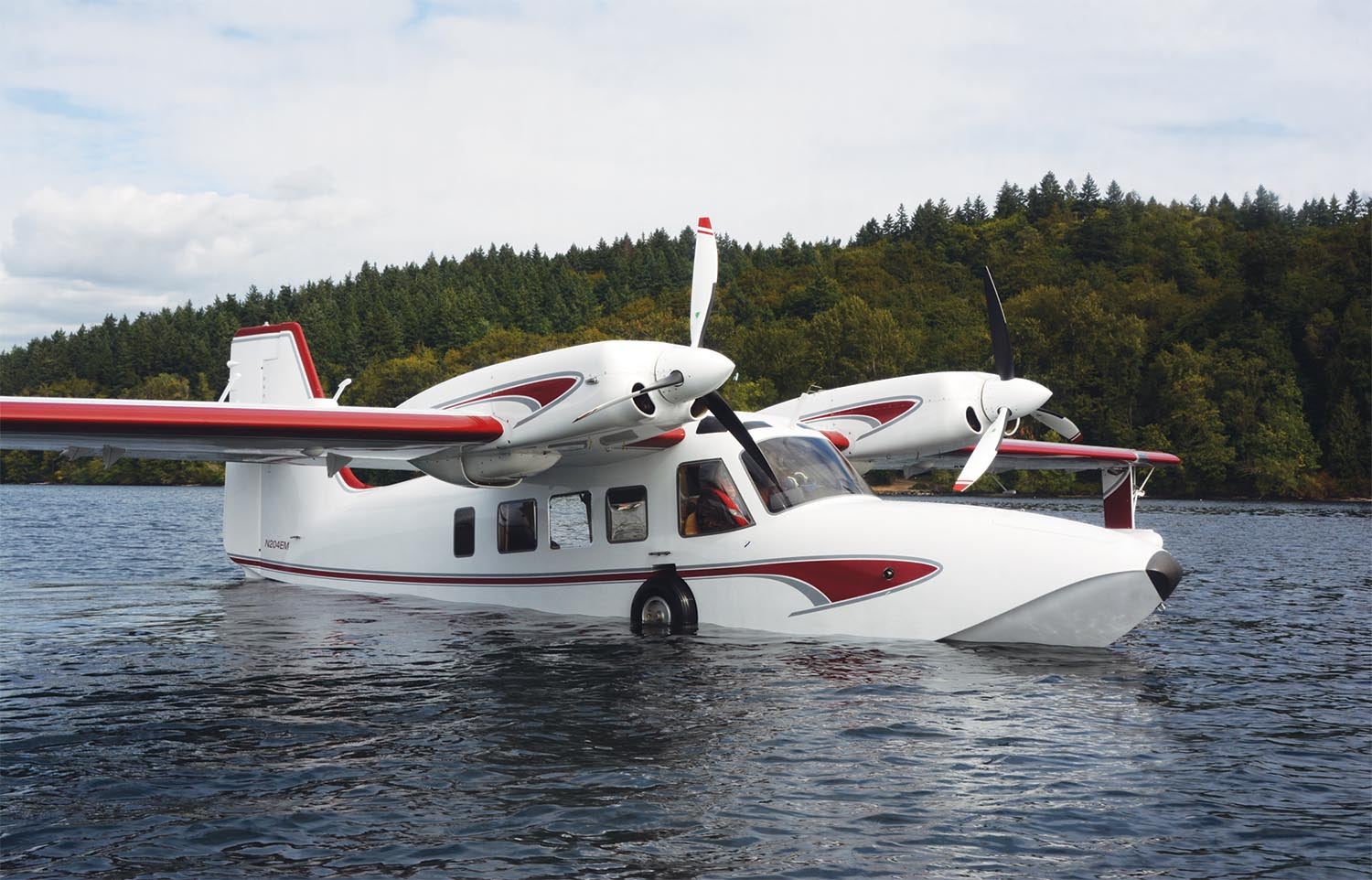
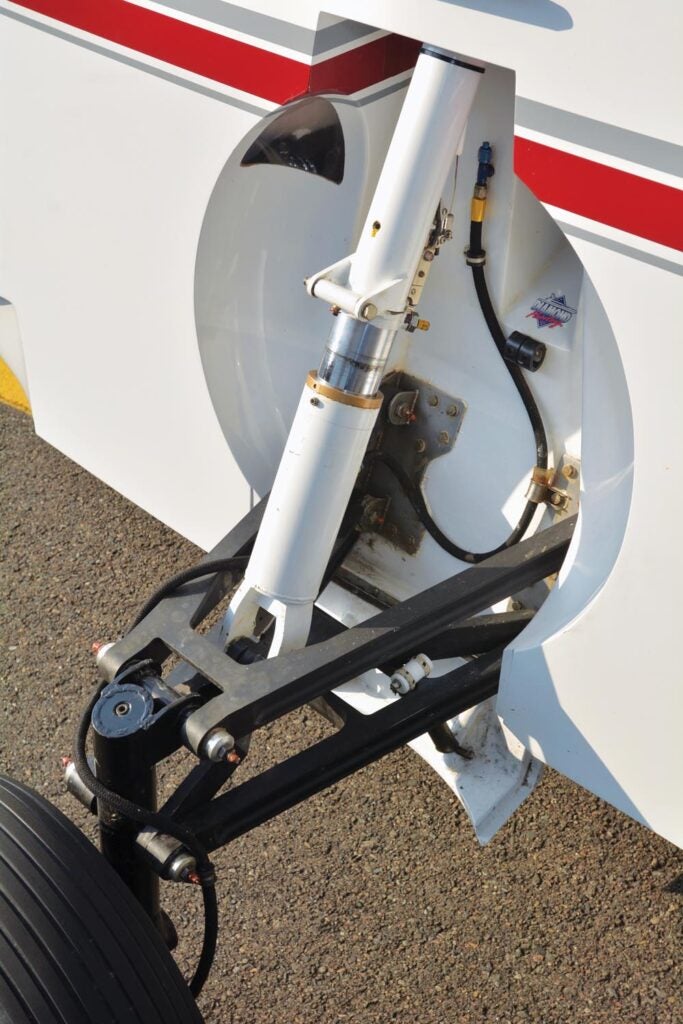
Obviously the Gweduck waddles gracefully with a tailwheel on land. That’s partly nostalgia, says Ross, but “if you look at trike flying boats of that size they don’t work well. The Mallard—it’s a trike—has a tail stinger because it otherwise falls on its tail when loading.” The long and large tail and wing-mounted engines naturally balance on conventional gear, something doubled down on by loading everything through a rear door.
Simplicity is maintained by dispensing with any steering linkage to the tailwheel, the full castering, lockable little wheel answering to throttle and brake inputs. Up front, the main gear clearly draws inspiration from early Loenings and Grummans but its geometry is unique to the Gweduck. All three wheels have their own electric motors. The tailwheel is a conventional linear actuator (jackscrew) while the mains each employ a trick, very high ratio harmonic drive (look it up), to power the wheels through 120° of arc. Due to the high gear ratio, the main gear will not free-fall down—it is powered down as well as up. Of course there is an emergency manual extension provided, or you could just look for a lake.
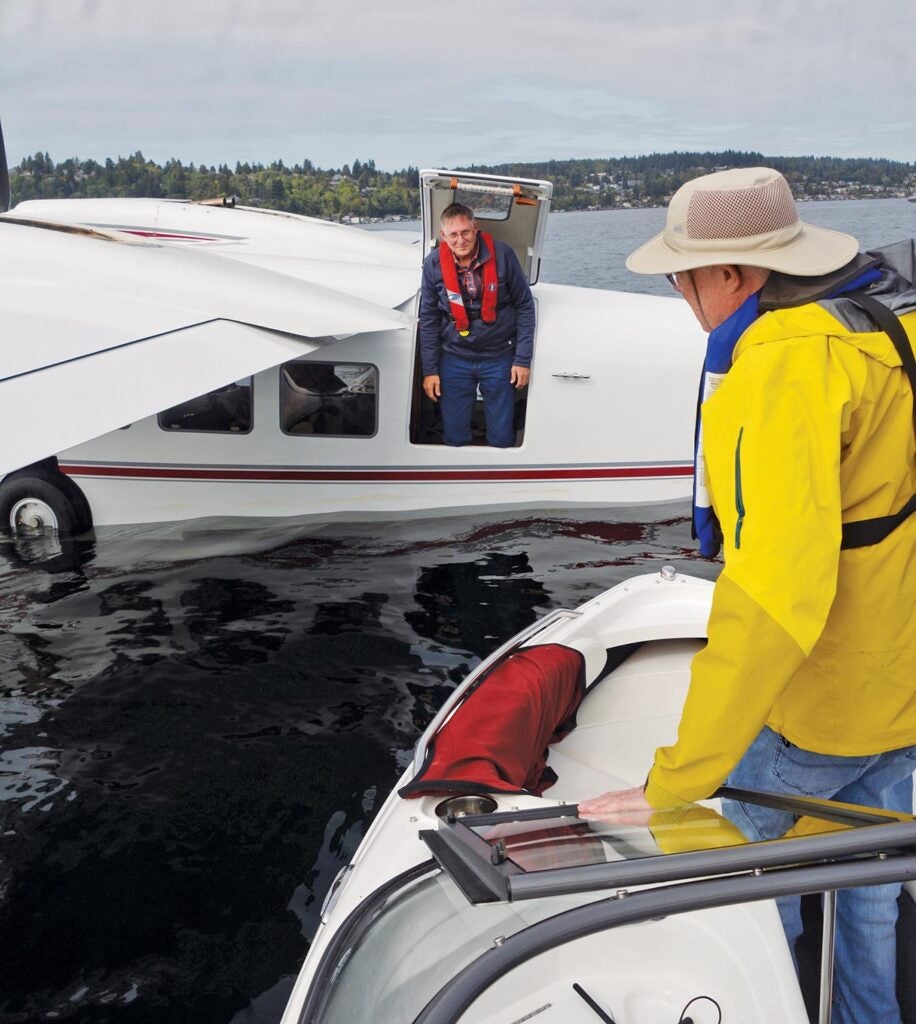
Given the extensive research, model testing and construction since Ben and Ross first dared speak of the project to each other in 1990, it wasn’t until 2007 when the prototype Gweduck had its inadvertent “Howard Hughes flight” and its real first flight in 2009. Ross says the airplane would have flown fine in ’07, but they spent the two years on flutter analysis and a slew of water tests including high- and low-speed taxiing, docking, beaching and towing. “Many subtle things were done at this time, a few for spray, some structural and work on the horizontal tail. We cut and pasted all over the airplane to get it right the first time, and when we finally did the first flight, it goes to paint, then a week later it goes to Oshkosh. It was not a development thing [when debuted at AirVenture], it was developed. We’ve hardly touched the airplane since the first Oshkosh trip. For a one-off prototype this is amazing.”
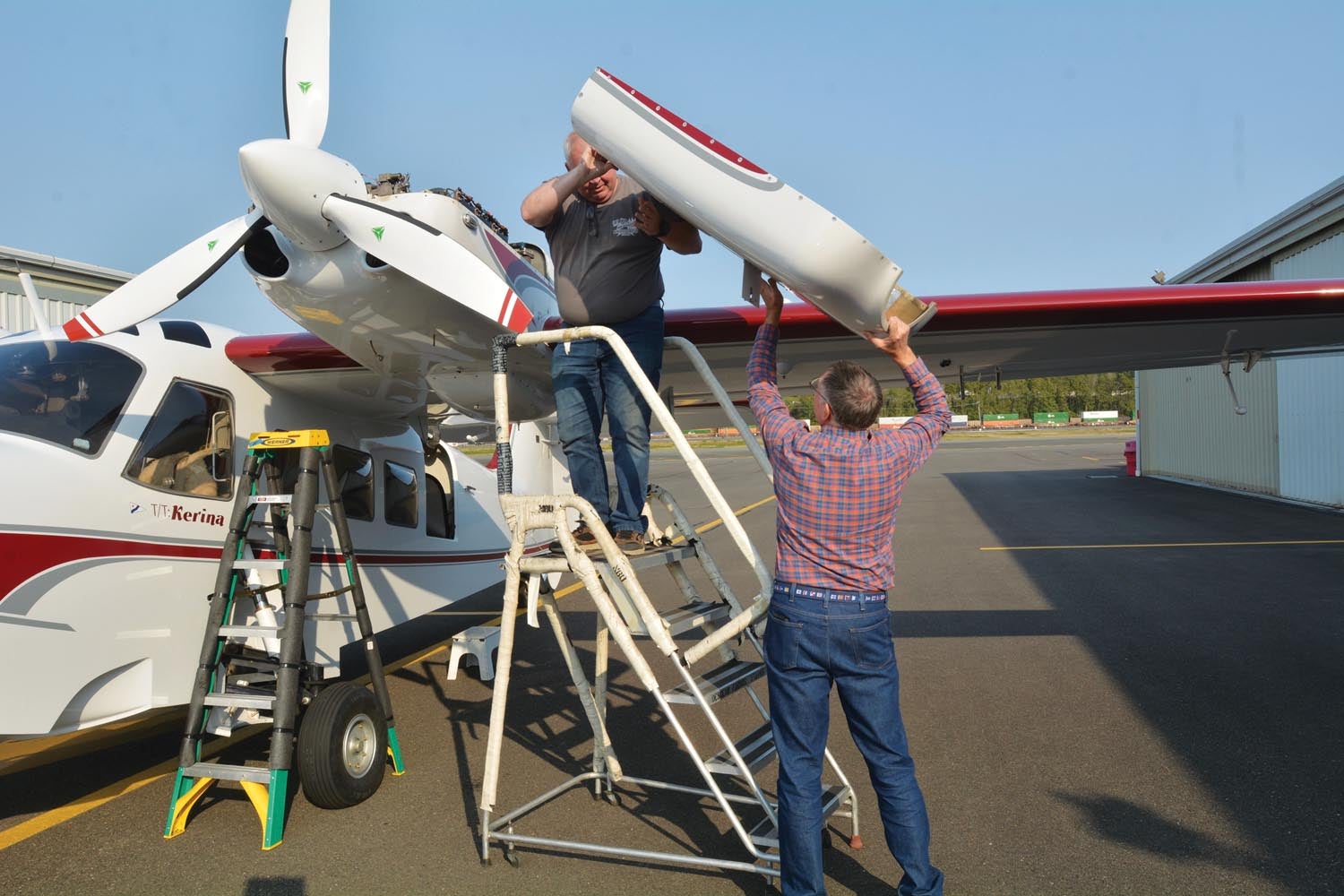
The Prototype Experience
Everyone associated with the Gweduck prototype gives it glowing reviews. It’s certainly fulfilled its mission as a long-range cruiser; from Alaska to the Bahamas the Gweduck has seen its share of sky and saltwater and with minimal maintenance. “We test the bilge pump once a year during condition inspection,” says Ross in testament to the plane’s leakproof integrity. There’s been no porpoising and no post-saltwater flight wash downs, either. Just oil changes and small tweaks as the team fine-tunes handling.
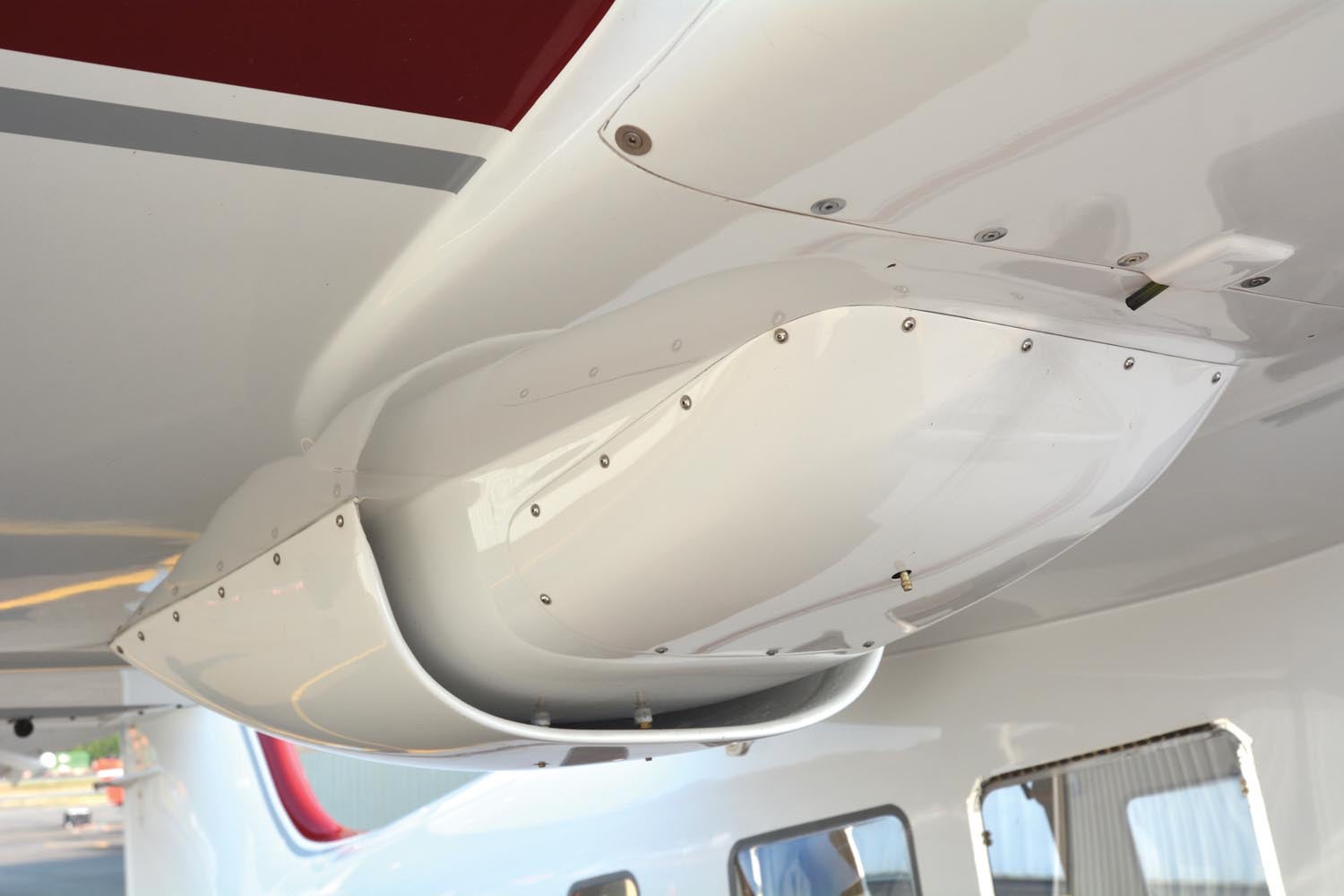
The prototype has demonstrated the well-known efficacy of low-power, low-speed cruising as it relates to range. Some of this was serendipitous as Gweduck demonstration pilot Burke Mees noted. Early on a speed restriction of 130 knots was applied as a flutter issue. This was resolved on the kit version and led to cruising at 50% power and 120 knots, which proved to be the Gweduck’s sweet spot. (There’s little talk of high speeds around the Gweduck as that’s not its mission. But it will go 140 knots at 28 gph total.) And let’s remember the prototype wears 260-hp versions of the IO-540 while the preferred kit engine is the 300-hp model.
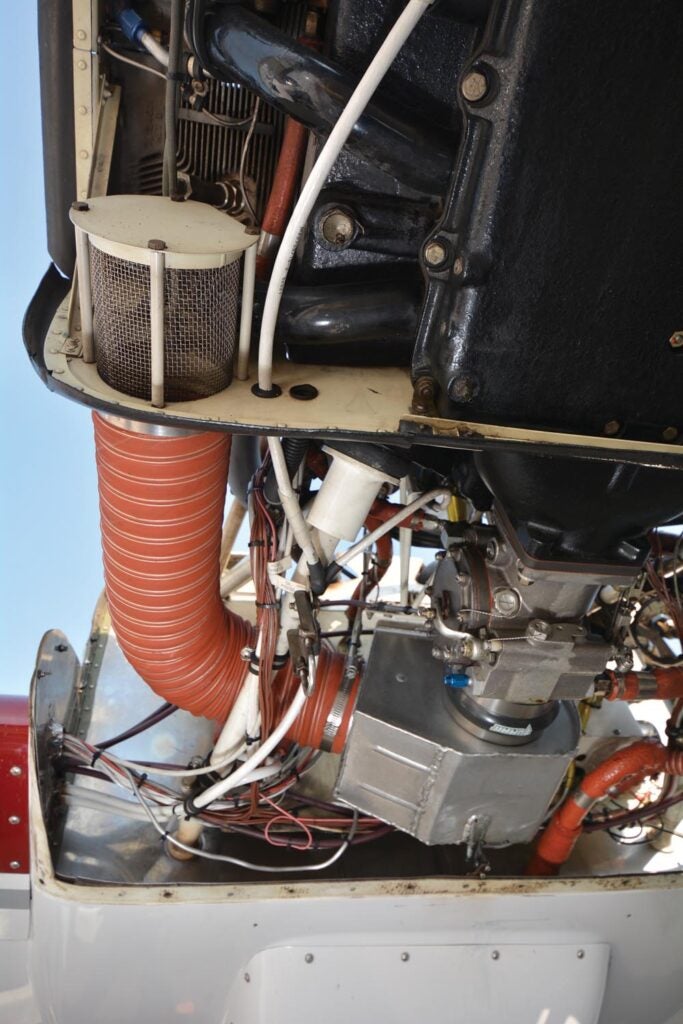
With an astounding 360 gallons of fuel capacity and engines burning maybe 11 gph each at economy cruise, it’s clear the Gweduck is an airplane you top up on Sunday and fly all week. Ross jokes you could head for Hawaii and just about the time you see the tallest peaks you’d run out of gas. “Call it 2000 miles of range,” he says. More practically, the inboard and center fuel tanks are topped for 200 gallons to give 1200 miles range and 10 hours of endurance while carrying a workable load of 760 pounds. “We regularly fly Seattle to Ketchikan with four people on board,” he notes. That’s 588 straight-line nautical miles (677 statute) with 1200 pounds of useful load after fueling with a one-hour reserve. It’s not even breaking a sweat.
In fact, the Gweduck’s fuel economy gives it a combination of load carrying—it boasts a 2000-pound useful load—and range sufficient to sail right past the old Grummans. “The Grummans burn a lot to go slow and won’t hold altitude on one engine,” says Ross. “The Gweduck breaks that paradigm. It is very fuel efficient, running at low power settings to burn 21 gallons per hour, so that makes it a long-distance airplane. To go any distance in a Grumman you are carrying nothing but fuel.” One example was a mission to carry a film crew to a B-24 crash site on Adak Island. “A Goose couldn’t do it,” said Ross. “You can’t get gas at Adak. It would have taken two trips to carry a four-person film crew there—about 1000 miles. [The Gweduck] could do it with one flight.”
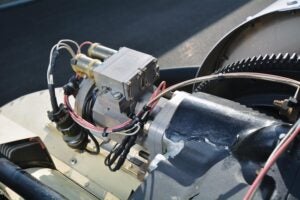
As for outright performance, the Gweduck “will hold altitude on one engine.” Precisely what the single-engine ceiling is, the team can’t say. “We just fly the thing around at 1000 feet, so the ceiling, we don’t know. But I have maintained 5000 feet at 6000 pounds gross weight,” notes Ross. Burke backed that up by saying the Gweduck has “excellent single-engine characteristics.”
In another anecdote, Ross said, “I flew down with a friend to a lake in eastern Oregon. It was 87° F, a density altitude of 7300 feet and we ended up with four people, 120 gallons plus baggage, and we got off in 2400 feet with naturally aspirated engines. An amphibious [Cessna] 206 there had to discharge all but the pilot to get off.”
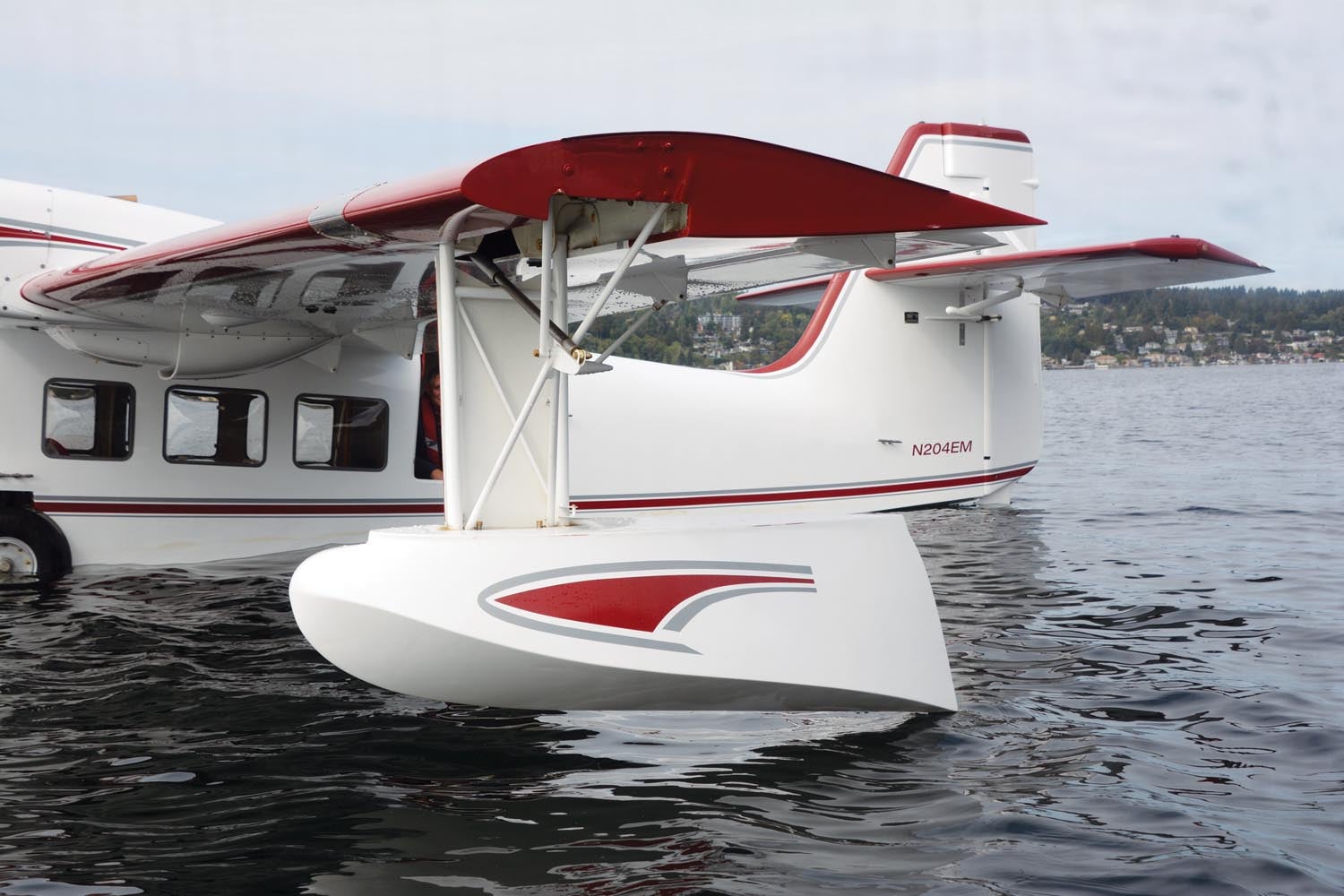
Kit Gweducks
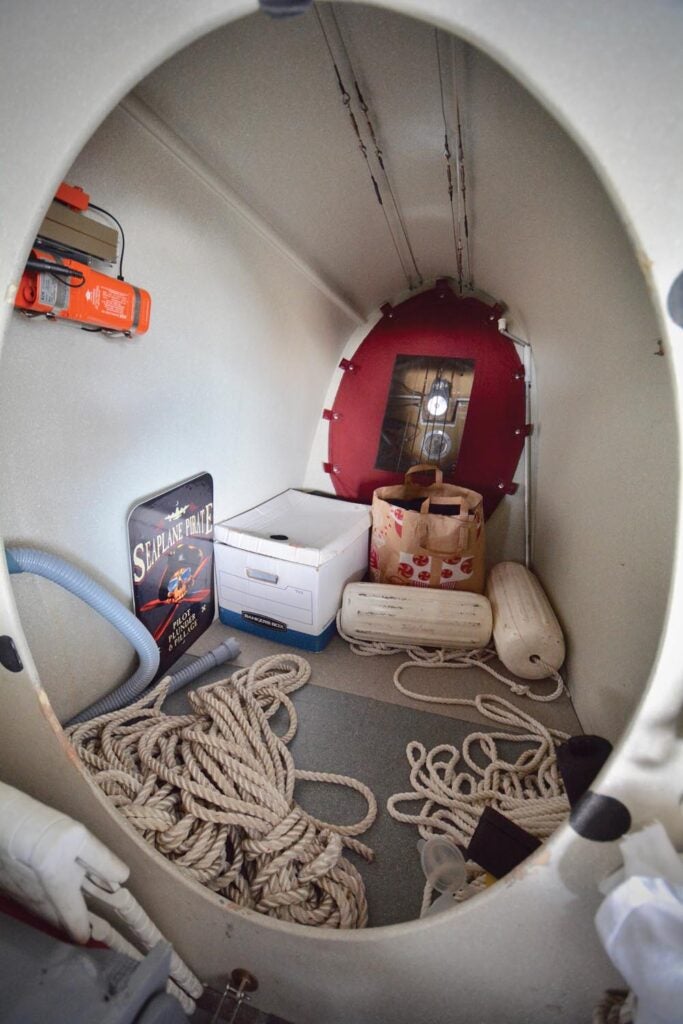
Kitting the Gweduck is a huge job as drawings and bills of material are made; construction, assembly and flight instruction syllabus written; tooling built; build team members hired and so on. But it’s also an opportunity to upgrade the design and incorporate lessons learned with the prototype. As expected there are relatively few changes because the prototype works so well. Most significant is a near total move to carbon fiber for weight reduction. Thus, the entire airframe on all kit Gweducks is carbon fiber with the exception of the forward bottom of the hull, which remains Kevlar reinforced fiberglass for impact resistance. There’s also some fiberglass atop the vertical tail to form an electronic window for the antennas buried inside.
Composite Creations estimates the kits will be 200 pounds lighter than the prototype, but the exact number naturally depends on how the customer finishes their plane. Because the prototype came out with a minor rear weight bias, production Gweducks mount their Lycoming IO-540s some 3 inches farther forward. Preliminary work on a Gweduck-specific turbo option is underway as well.
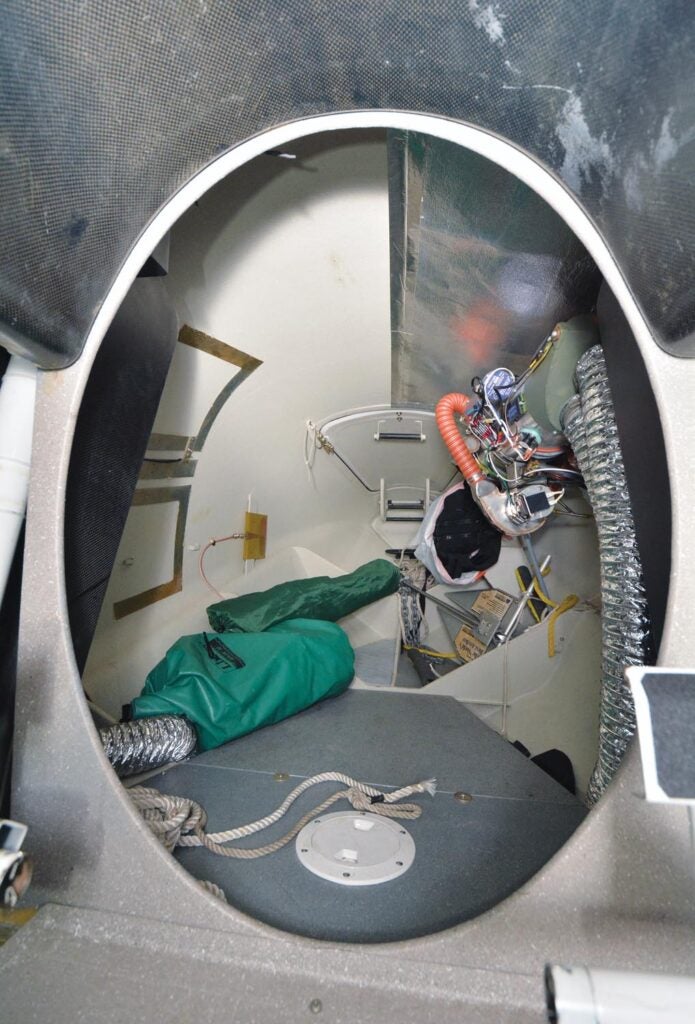
It’s worth noting the Gweduck team is maximizing composite construction as the total lack of corrosion in the prototype is a complete game changer and they want to emphasize that advantage. Everything that can be composite is, all the way down to the engine baffling. Pretty much the only metal parts are the landing gear legs, stainless firewalls, engine mounts, engines and hardware.
Pricing
You would have to ask. The kit costs $465,000 and includes linkages, wheels and brakes and major fuel-system components. Add to that the builder-assist program in Prineville as well as the usual engine, props, avionics, paint and so on. A recent accounting estimates total completion cost for a nicely equipped, dual Garmin G3X Gweduck at $1.35 million. Builder assist financing is in development.
Yes, We Want One
Without a doubt the Gweduck is one cool airplane. Its ability to operate meaningful loads and up to six people from land, sea, lake or river places it in rare company. Floatplanes such as the Experimental Murphy Moose and certified De Havilland Beaver are its only real competition, and they don’t have the range, sea keeping or corrosion resistance of the Gweduck. The old Grummans are, sadly, near extinction in workable form today.
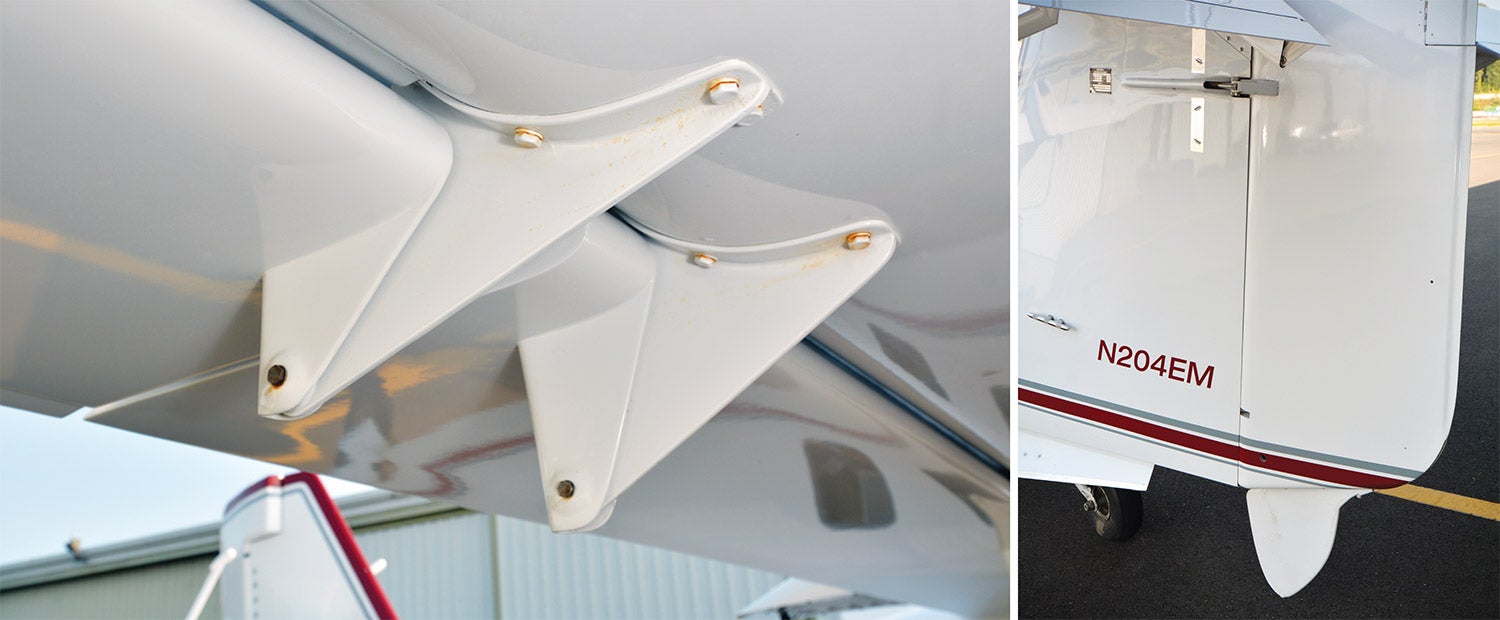
Furthermore, strictly on its own merits the Gweduck is a fun, useful airplane just begging to carry you to a secluded beach or cove. From the pilot’s seat it cruises near effortlessly and handles nimbly on land or water with a great combination of stability and modest control pressures. It can be configured from austere to opulent and stands ready for adventures no little taildragger, STOL specialist, floatplane, helicopter, dirigible or other flying boat can match.
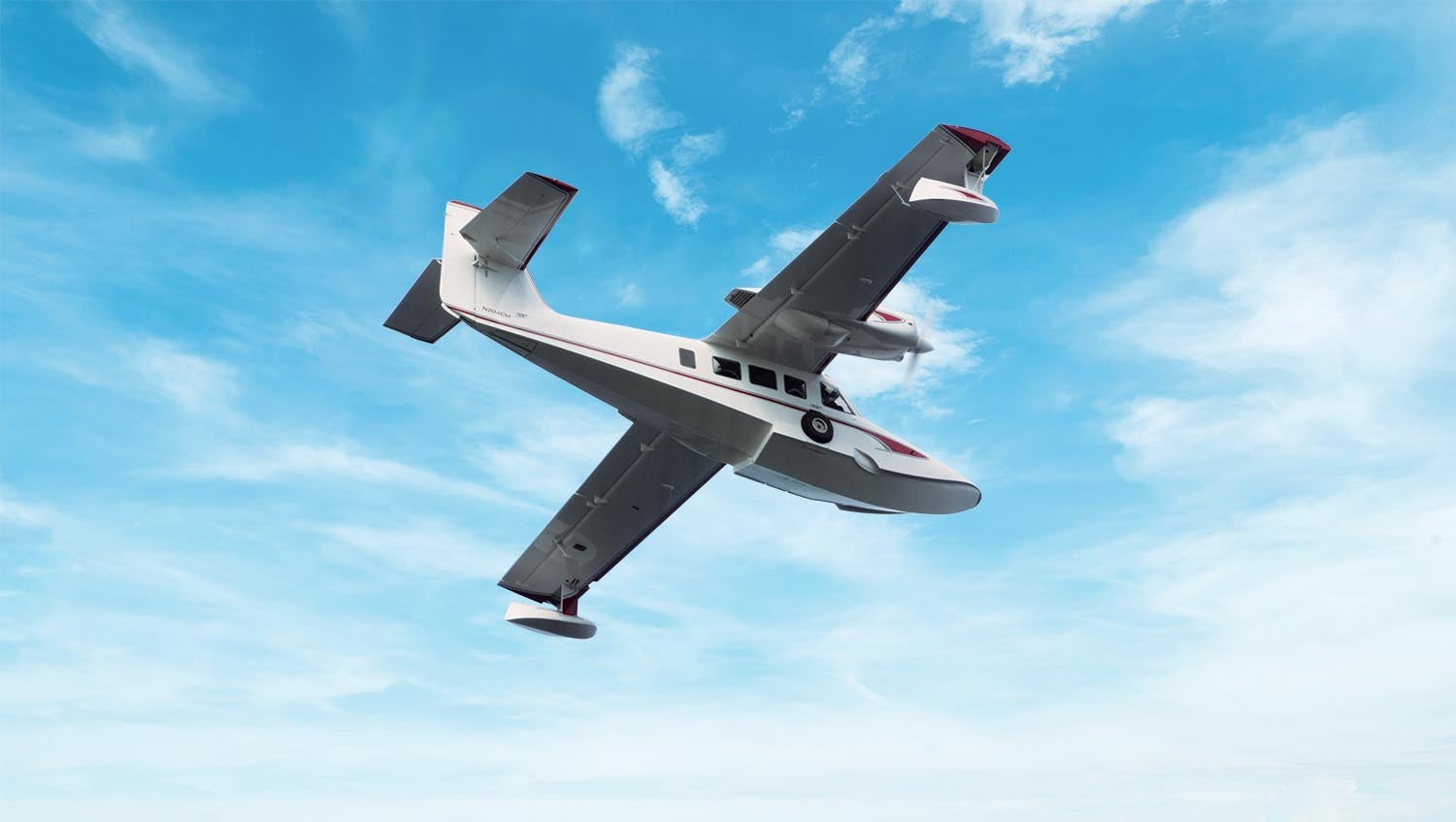
Shots we couldn’t fit into the article
Photos: Tom Wilson










































































Sounds like fun! I actually got ATP/AMES in a Widgeon in Florida. So far, that license has only been good for bragging rights, but a Gweduck would be lots of fun — especially around here, where so much of the water is salt or brackish. And I learned about gweducks when I llived in the Seattle area.
Good morning and Most Commendable! What a passion brought about into reality.
Henry – Retired and Disabled U.S. Coast Guard Aviation – Yes Grumman Albatross HU-16E Air Sea Rescue Group Cape Cod – in the 1970’s
The IO 540 Navajo engine is a bit of a concern. Back in the day when I was flying 3-400 hours per year, these engines had a propensity to NOT make their 1200 hr TBO. Typical engines were requiring overhaul at 900 hours, or thereabouts
I got my MES in a Chalks Goose back in 1967. The chief pilot had his license signed off by Orville Wright!
I then flew for Island Flying Service in the Bahamas on both the Goose and the one I love the most the Widgeon.
I would forsake the flying boats for a Maule M-7 on Edo Amphibs that I flew for French TV in the Arctic from Frobisher to Barrow as well as the Caribbean and Central America in the winter.
I always dreamed of owning a widgeon and now that dream has morphed into a Gweduck.
I’m getting a bit old for the acrobatics operating a MES but I can always find a young athletic co-pilot to assist.
Good luck Ben, Ross and Walter, you’ve checked all the right boxes for a truly useful MES aircraft!
As a land locked and sadly, non pilot aviation buff, this looks and sounds like a wonderful aircraft. I do “fly” around the world in my dreams and Microsoft Flight Sim, so wonder if anyone is thinking of creating a sim version of this wonderful aircraft…